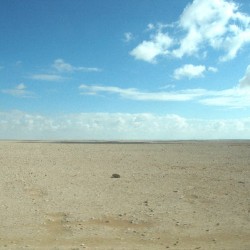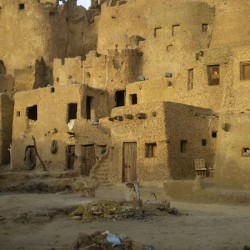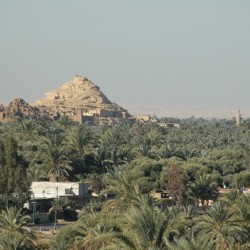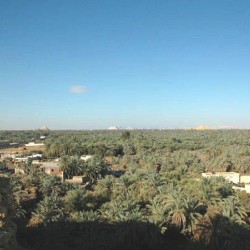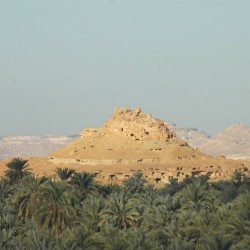Siwa Oasis
Q2008735Ammon: name of a Libyan deity and his oracle in the desert. It became famous after Alexander the Great made a detour to consult the god. The modern name is Siwa.

The oasis of Siwa is extremely hot; in the summer, the average temperatures range between 22º during the night and 37º during the day, with 48º being a normal maximum. Until recently, the average annual rainfall was less than 8 mm; the global climate change, however, has changed this, and there have been several heavy rains in the first decade of the twenty-first centuries. This is disastrous, because the houses of Siwa have, for centuries, been made of dried mud. The site is dominated by hight artificial mounds ("shali").
Because Siwa is located in a depression, the water table is comparatively high, varying between three meters below the surface to just 50 centimeters. As a consequence, there are many wells: 281 by one counting (e.g., "Cleopatra's Bath" - in Antiquity known as "Spring of the Sun"). Because they produce more water than evaporates, there are large, silty lakes east and west of the main settlement. The gardens of Siwa have always been located near the springs, and produce(d) olives and dates; barley and figs were less important.
